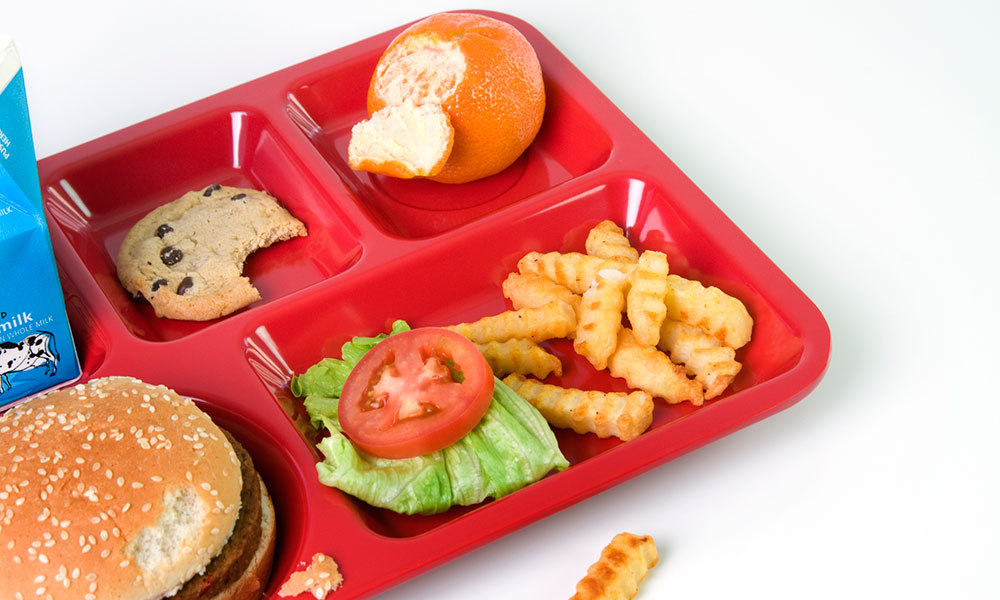
Groups At Odds Over Schools’ Required Fruit and Vegetable Servings
Both the School Nutrition Association and the United Fresh Produce Association are working to ensure kids eat healthfully while at school. But, as Congress prepares to reauthorize school nutrition legislation, the groups are in disagreement over how to do so.
How many fruits and vegetables should U.S. schools be required to serve kids?
This question is sparking a debate between two national organizations with a stake in healthy food options for kids—and it comes right as Congress prepares to reauthorize the Healthy, Hunger-Free Kids Act of 2010 this fall.
On the one side is the School Nutrition Association, which last week released a new position paper calling for changes to the legislation, including loosened requirements on the amount of fruits and veggies schools are required to serve—currently, one-half cup.
SNA, which represents 55,000 professionals who prepare and serve school meals, pointed to data from the U.S. Department of Agriculture (USDA) that shows a decline in the amount of children choosing school lunches as well as higher food-preparation costs since the rules were implemented.
“SNA supports strong federal nutrition standards for school meals, including calorie caps and mandates to offer a greater quantity and variety of fruits and vegetables,” SNA CEO Patricia Montague, CAE, said in a release. “However, some of USDA’s regulations under the law have unnecessarily increased costs and waste for school meal programs and caused many students to swap healthy school meals for junk-food fare. SNA is asking Congress to provide schools adequate funding and flexibility, allowing school nutrition professionals to plan creative, appealing menus that will entice students to eat healthy school meals.”
Meanwhile, the United Fresh Produce Association, which represents segments of the fresh produce supply chain, responded to SNA’s position paper and weighed in on the issue. “When health classes teach students to make half their plate consist of fruits and vegetables, it would be unconscionable for the school cafeteria to undercut that message by not serving at least one-half cup in school meals,” Tom Stenzel, United Fresh president and CEO, said in a statement.
“While we agree with many recommendations in SNA’s 2015 position paper, we are deeply disappointed that SNA has chosen to continue its ill-advised fight against serving kids more fruits and vegetables in schools,” Stenzel said. “The requirement that kids receive one-half cup of fruits or vegetables in school meals is being successfully met by tens of thousands of schools across the country.”
United Fresh recently partnered with several organizations as part of a national campaign to bring more healthy food options to schools. So far the “Let’s Move Salad Bars to Schools” campaign has helped bring more than 3,500 salad bars to U.S. schools.
Editor’s note: This article has been updated to clarify United Fresh’s statement on SNA’s position paper.
(iStock/Thinkstock)






Comments